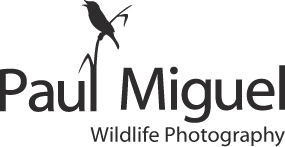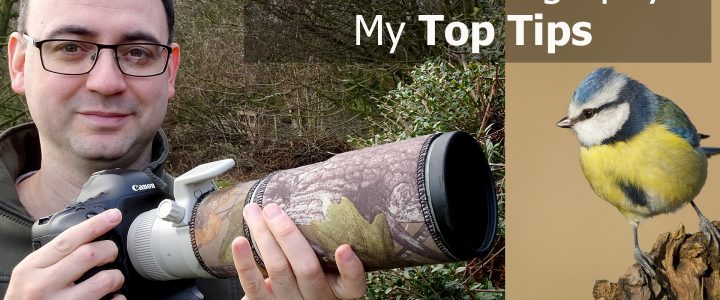There’s many ingredients that make a cracking wildlife image. Today I’ve picked out just 5 tips that I think are particularly important if you’re just getting started.
Tip Number 1: Auto-focus Mode
You’re probably using auto-focus already, but it’s important to know which mode you have set in camera. Single shot, also called One Shot or AF-S is ideal for static subjects; with this mode, once the camera has focused on the subject the focus is locked. It’s particularly useful for re-composing without the focus changing. The Continuous Auto-focus mode, also called Servo and AF-C will continuously re-focus as a subject moves, provided you keep focus engaged. This is the best option for moving subjects, e.g. birds in flight and running animals. Make sure you understand the difference between the two and that you always know which one is set in camera. You can also use the Back Button Focus method, in which case you can keep the camera permanently on the Continuous Focusing mode.
Tip Number 2: Focus Points and Zones
Your camera might be set up so that all the focus points (the whole viewfinder) is focusing. This is not ideal! You will have a number of focus points in the viewfinder – these are the squares that will light up red when activated. I’d advise using using one focus point or a small cluster. Depending on your camera you should be able to select different focus points depending on where you want to focus. More advanced cameras will allow greater options of clusters and zones and you should experiment to see what works in different situations. Watch my video on Flight Photography for more detail.
Tip Number 3: Aperture Priority
I always advise Aperture Priority for beginners. This exposure mode is a good choice for wildlife photography, also known as A or AV. You set the aperture, ideally a fairly wide aperture, e.g. f5.6; the camera will then select the appropriate shutter speed dependent on the available light and the ISO. Because you are using a wide aperture and letting more light in, this means that the shutter speed will be higher to balance it. The other benefit of selecting a wide aperture yourself is that it will help blur the background and make the subject stand out more clearly. ISO is also a factor here, so if you’re not sure about this then try the following as a guide: select between ISO 200 and 400 on bright days and between ISO 800 and 1600 on overcast days..
Tip Number 4: Avoid Underexposure
A common problem is when photographing a subject against the sky – resulting in dark, underexposed images. This is because the light reflecting back through the viewfinder causes the camera to reduce the exposure. To fix this, if you’re using Aperture Priority (or Shutter Priority) you need to find the plus/minus button; press this down and use the dial to increase the exposure, i.e. make it brighter. You need to go in the Plus direction; try around +1 as a guide. Each camera will vary how this works but there is usually a dial on the top, or perhaps a wheel at the back. If you want to understand more about exposure, watch this Exposure Tutorial Video
Tip Number 5: Continuous Shooting
When photographing birds and animals is advisable to shoot continuously, rather than one shot a time. You’ll increase your chances of a better image. Find the Drive setting and switch to a Continuous Frame Rate; you may have options of L and H which is low and high; this will vary enormously from camera to camera. It’s not always necessary to shoot at the highest frame rate. I’d suggest starting with a lower rate continuous mode which might be 3 or 5 frames per second. Wildlife is always moving so the more images you take the greater your chance of a pin sharp photo, and/or a particularly pleasing pose.
Tip Number 6: Extra Tip and Most Important!
Please put the welfare of wildlife first! No picture of a bird or animal is more important than its welfare. Try to learn not just about photography but also about the habits of your subject. Use your instinct and back away if you feel you’re disturbing it. Remember, the more time you spend with a wild bird or animal, the more you will learn – and the more it will come to trust you. If you find a great opportunity for regular photographs of popular species such as owls, or rare birds… don’t tell everyone! You can soon find the quiet location literally heaving with photographers, some who may not have the subject’s best interest at heart!
I hope these 5 tips helped you out if you’re just getting started in Nature Photography. Subscribe to my YouTube Channel for future Tutorial Videos. Happy Shooting!


